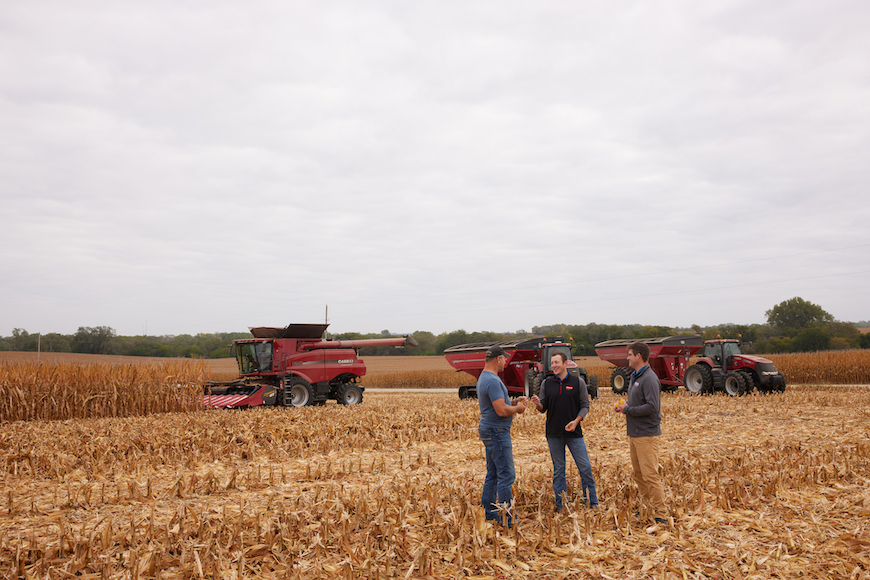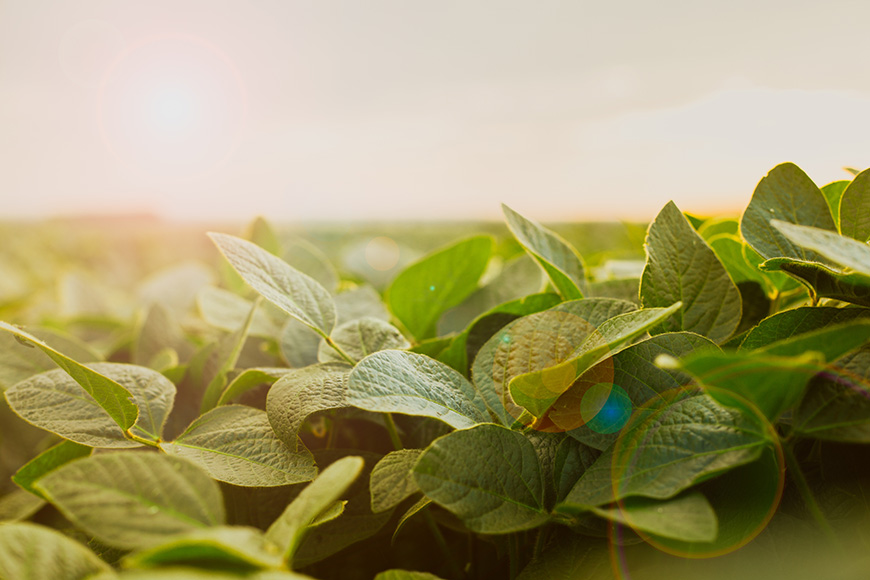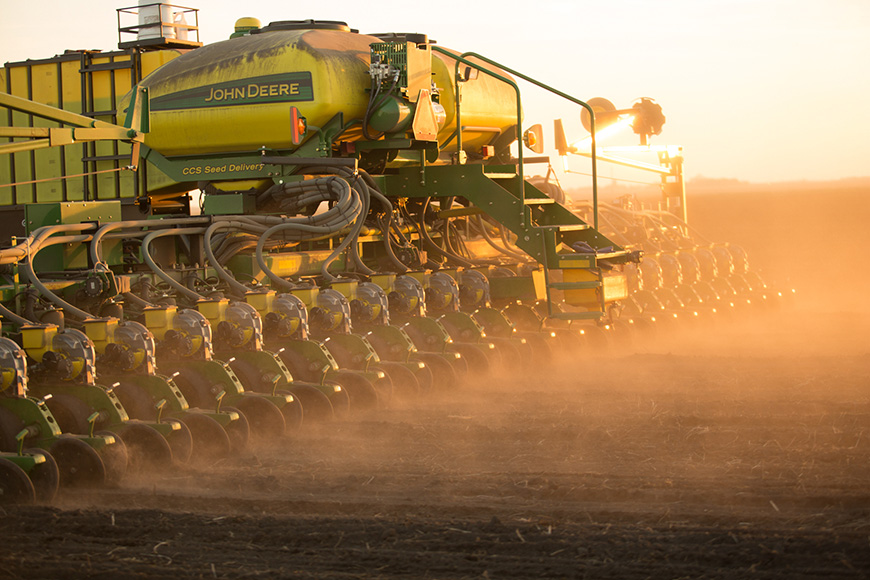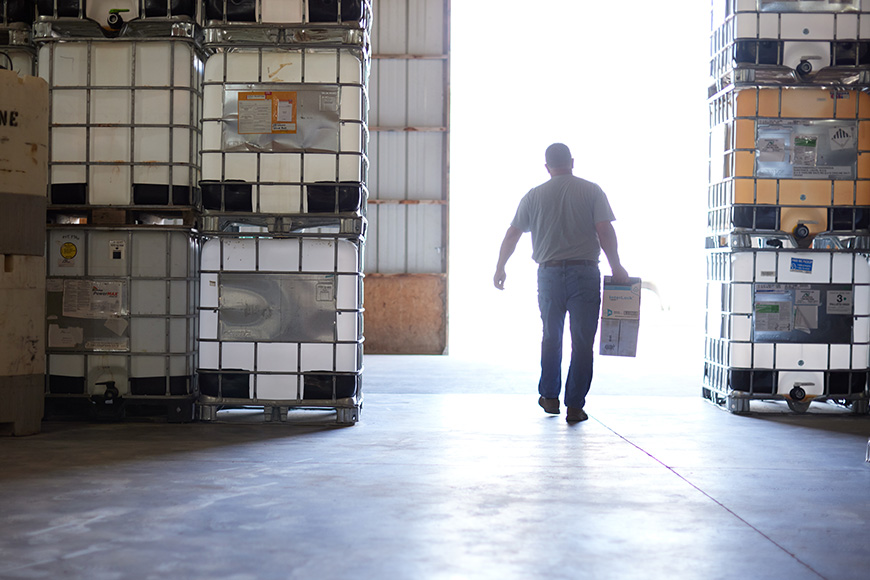Build Confidence In 2026 Management Decisions

If you’re not already making decisions for the 2026 growing season, you should be. Starting your plan during harvest allows you to use insights from this season to support and guide your strategy in real time. Here are a few ways to build confidence in next year’s management decisions.
Create a Seed Variety Short List
The 2025 harvest offers an excellent opportunity to evaluate seed products and technologies you may want to purchase for the 2026 growing season. I recommend developing a short list of products you’d like to consider, and, with the help of your trusted advisor, make it a priority to see how they performed. Create a plan to assess those products, whether it’s looking at data online, asking around or digging into WinField® United Answer Plot® data with your local retailer.
How are the standability ratings for that new product? How did it yield? These are questions best answered while it’s fresh in your mind, post-harvest.
You might not make your final seed decisions until later, but having your own insights to supplement yield data can build your confidence as you make those seed selections.
Take a Holistic View of Data
Evaluating data should be a core component in any product decision. Unfortunately, there are no perfect products, and no singular pieces of data are perfect. To help maximize the odds for successful decisions, try to factor as many pieces of relevant data and information as possible, while understanding the strengths and weaknesses of each data point.
The farther removed from the previous growing season we get, the more difficult it can be to use a holistic view of data. It becomes easy to focus on just one or two data points such as yield performance from that previous year or cost. While important factors, they alone may not give the best view of a product’s potential fit on your acres. Considering statistical Answer Plot yield trends, performance from previous years and environments, product response to management decisions like population, nitrogen and fungicide, and if that product has the agronomic characteristics to handle the unique stresses of your operation can increase your likelihood of success in 2026.
Help Minimize Risk in Seed Decisions
Even with the best seed selection processes, product performance can vary from year to year based on different growing conditions. A top-performing hybrid one year might be your worst the next. Your local ag retailer can help you minimize that risk by recommending a variety of seed products that offer complementary agronomic characteristics. This is a great start for managing genetic risk on your farm, but it doesn’t fully address managing financial risk.
The next evolution of risk management could include enrolling in the Advanced Acre® Rx (AARx) program. The AARx program is a data-backed service warranty program that provides agronomic prescriptions built around how and where you farm. It’s a comprehensive program that offers financial backing if your agronomic plans don’t turn out the way you thought they would.* The AARx program can give you the confidence to balance both agronomic and financial risks in your operation.
Evaluate the Agronomic Implications of Management Changes
With the fall of current commodity prices, rising input costs and fluctuating global demand, you may have financial motivations to change how you farm. Whether you are looking at reducing additional input use, altering what machinery you use or diversifying crops, you should plan for the agronomic and financial implications of those changes.
Seed and trait selections, crop nutrition and crop protection strategies or equipment requirements may need to evolve to limit any risks associated with new management practices. Surround yourself with trusted advisors and mentors who can help plan for potential challenges and ease the uncertainty as you prepare for what’s ahead incorporating different practices.
Articulate Your Goals and Stay True to Them
Even though you are busy this harvest season, now is a great time to identify your goals for 2026 and write them down. What has happened so far this year that you would like to improve upon? Where are your operation’s biggest opportunities? Once you’ve got your goals on paper, start asking what you can do this winter to achieve them.
When considering new seed varieties or products for 2026, make sure you don’t overlook the potential of this season’s strategies. Just because something didn’t work this year doesn’t mean it won’t work next year. In each season, including 2025, unexpected situations have popped up that possibly changed the outcome for a product you tried. If you believe it could still be the right fit and quality data backs it up, trying the product again under different conditions could lead to success.
There's no shortage of new products, ideas and technologies for farmers to try. Whether it’s biologicals, new technologies or data management tools, I encourage you to ask yourself what pains those products promise to solve. And are those pain points real on your farm? If not, maybe that new opportunity isn’t one you prioritize.
Sometimes the best improvements to your operation don’t come from a new product or technology. Instead, they come from doing what you’re already doing better. Your WinField United retailer can help you map out your goals for the 2026 season and build a plan for collecting meaningful information this season.
*Agreement is required, and conditions, restrictions and service fees apply. Percentage goals for the crops' Approved Yield range from 95-105% for corn and 95-100% for soybeans. Only available to corn and soybean farmers who enroll a minimum of 250 acres of an individual crop in the program.
All photos are either the property of WinField United or used with permission.
© 2025 WinField United. Important: Before use always read and follow label instructions. Crop performance is dependent on several factors many of which are beyond the control of WinField United, including without limitation, soil type, pest pressures, agronomic practices and weather conditions. Growers are encouraged to consider data from multiple locations, over multiple years and to be mindful of how such agronomic conditions could impact results. Advanced Acre, Answer Plot and WinField are trademarks of WinField United. All other trademarks are the property of their respective owners.
Create a Seed Variety Short List
The 2025 harvest offers an excellent opportunity to evaluate seed products and technologies you may want to purchase for the 2026 growing season. I recommend developing a short list of products you’d like to consider, and, with the help of your trusted advisor, make it a priority to see how they performed. Create a plan to assess those products, whether it’s looking at data online, asking around or digging into WinField® United Answer Plot® data with your local retailer.
How are the standability ratings for that new product? How did it yield? These are questions best answered while it’s fresh in your mind, post-harvest.
You might not make your final seed decisions until later, but having your own insights to supplement yield data can build your confidence as you make those seed selections.
Take a Holistic View of Data
Evaluating data should be a core component in any product decision. Unfortunately, there are no perfect products, and no singular pieces of data are perfect. To help maximize the odds for successful decisions, try to factor as many pieces of relevant data and information as possible, while understanding the strengths and weaknesses of each data point.
The farther removed from the previous growing season we get, the more difficult it can be to use a holistic view of data. It becomes easy to focus on just one or two data points such as yield performance from that previous year or cost. While important factors, they alone may not give the best view of a product’s potential fit on your acres. Considering statistical Answer Plot yield trends, performance from previous years and environments, product response to management decisions like population, nitrogen and fungicide, and if that product has the agronomic characteristics to handle the unique stresses of your operation can increase your likelihood of success in 2026.
Help Minimize Risk in Seed Decisions
Even with the best seed selection processes, product performance can vary from year to year based on different growing conditions. A top-performing hybrid one year might be your worst the next. Your local ag retailer can help you minimize that risk by recommending a variety of seed products that offer complementary agronomic characteristics. This is a great start for managing genetic risk on your farm, but it doesn’t fully address managing financial risk.
The next evolution of risk management could include enrolling in the Advanced Acre® Rx (AARx) program. The AARx program is a data-backed service warranty program that provides agronomic prescriptions built around how and where you farm. It’s a comprehensive program that offers financial backing if your agronomic plans don’t turn out the way you thought they would.* The AARx program can give you the confidence to balance both agronomic and financial risks in your operation.
Evaluate the Agronomic Implications of Management Changes
With the fall of current commodity prices, rising input costs and fluctuating global demand, you may have financial motivations to change how you farm. Whether you are looking at reducing additional input use, altering what machinery you use or diversifying crops, you should plan for the agronomic and financial implications of those changes.
Seed and trait selections, crop nutrition and crop protection strategies or equipment requirements may need to evolve to limit any risks associated with new management practices. Surround yourself with trusted advisors and mentors who can help plan for potential challenges and ease the uncertainty as you prepare for what’s ahead incorporating different practices.
Articulate Your Goals and Stay True to Them
Even though you are busy this harvest season, now is a great time to identify your goals for 2026 and write them down. What has happened so far this year that you would like to improve upon? Where are your operation’s biggest opportunities? Once you’ve got your goals on paper, start asking what you can do this winter to achieve them.
When considering new seed varieties or products for 2026, make sure you don’t overlook the potential of this season’s strategies. Just because something didn’t work this year doesn’t mean it won’t work next year. In each season, including 2025, unexpected situations have popped up that possibly changed the outcome for a product you tried. If you believe it could still be the right fit and quality data backs it up, trying the product again under different conditions could lead to success.
There's no shortage of new products, ideas and technologies for farmers to try. Whether it’s biologicals, new technologies or data management tools, I encourage you to ask yourself what pains those products promise to solve. And are those pain points real on your farm? If not, maybe that new opportunity isn’t one you prioritize.
Sometimes the best improvements to your operation don’t come from a new product or technology. Instead, they come from doing what you’re already doing better. Your WinField United retailer can help you map out your goals for the 2026 season and build a plan for collecting meaningful information this season.
*Agreement is required, and conditions, restrictions and service fees apply. Percentage goals for the crops' Approved Yield range from 95-105% for corn and 95-100% for soybeans. Only available to corn and soybean farmers who enroll a minimum of 250 acres of an individual crop in the program.
All photos are either the property of WinField United or used with permission.
© 2025 WinField United. Important: Before use always read and follow label instructions. Crop performance is dependent on several factors many of which are beyond the control of WinField United, including without limitation, soil type, pest pressures, agronomic practices and weather conditions. Growers are encouraged to consider data from multiple locations, over multiple years and to be mindful of how such agronomic conditions could impact results. Advanced Acre, Answer Plot and WinField are trademarks of WinField United. All other trademarks are the property of their respective owners.




